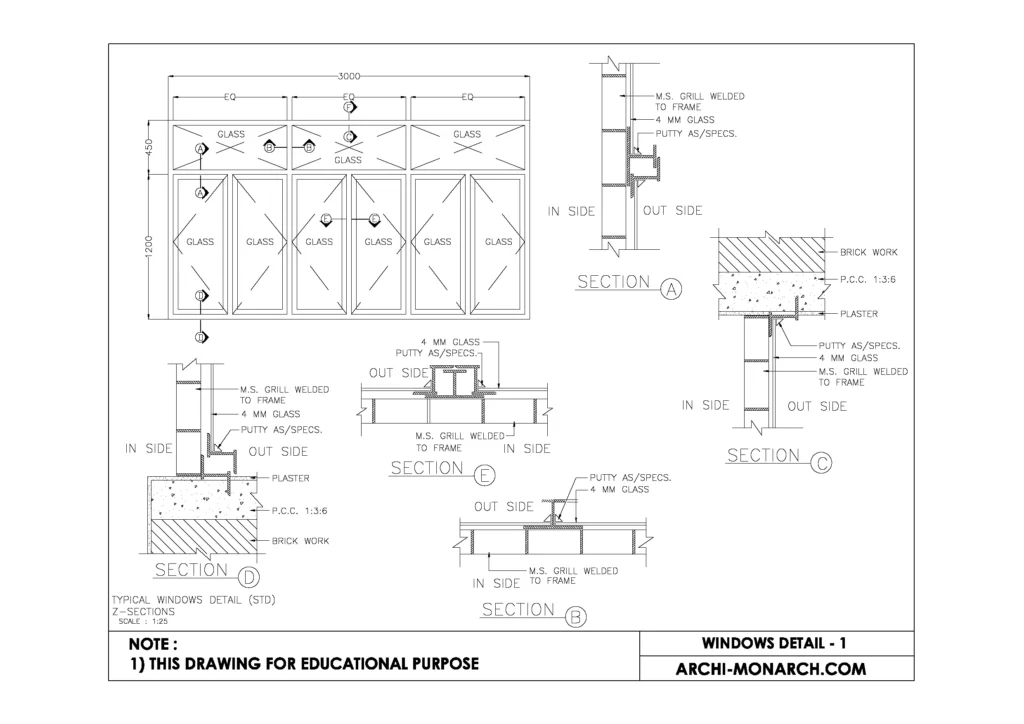Windows in architecture refer to openings in a building’s walls that allow light and air to enter, and provide views to the outside.
They can be fixed or operable and come in a variety of shapes, sizes, and styles. Windows can also play an important role in the aesthetic and design of a building, as well as its energy efficiency.
If you want to know about the interior detail or miscellaneous detail or staircase detail, please click the link.
Image of windows detail and downloadable (in DWG) link below

Windows detail drawing – 1
A window detail drawing is a technical drawing that shows detailed information about a specific aspect of a window installation. It typically includes dimensions, materials, and installation methods, and may also include information about the window’s performance characteristics, such as its U-value or solar heat gain coefficient.
Window detail drawings are used by architects, builders, and contractors to ensure that the window is installed correctly and to meet building codes and standards. They are also used for construction documents and for communication between different parties involved in the construction process.
A window detail drawing can also include information about the type of window and its operation, such as whether it is a single-hung, double-hung, casement, or sliding window, and how it is operated (manually or with a motor). It may also show details of the window frame, including the type of material used (such as wood, vinyl, or aluminum) and any special features, such as thermal breaks or air-sealing techniques.
The drawing may also include details about the window’s glazing, such as the type of glass and its thickness, as well as any special coatings or films that have been applied to the glass. Additionally, the drawing may show details of the window’s flashing and sealing, including the type of material used, the location of the flashing, and any special instructions for proper installation.
Overall, window detail drawing is important to ensure the window is installed correctly and to meet building codes and standards, and also to make sure that the window is properly sealed to prevent air and water infiltration.
Our tips to help you improve your architectural windows detailing.
